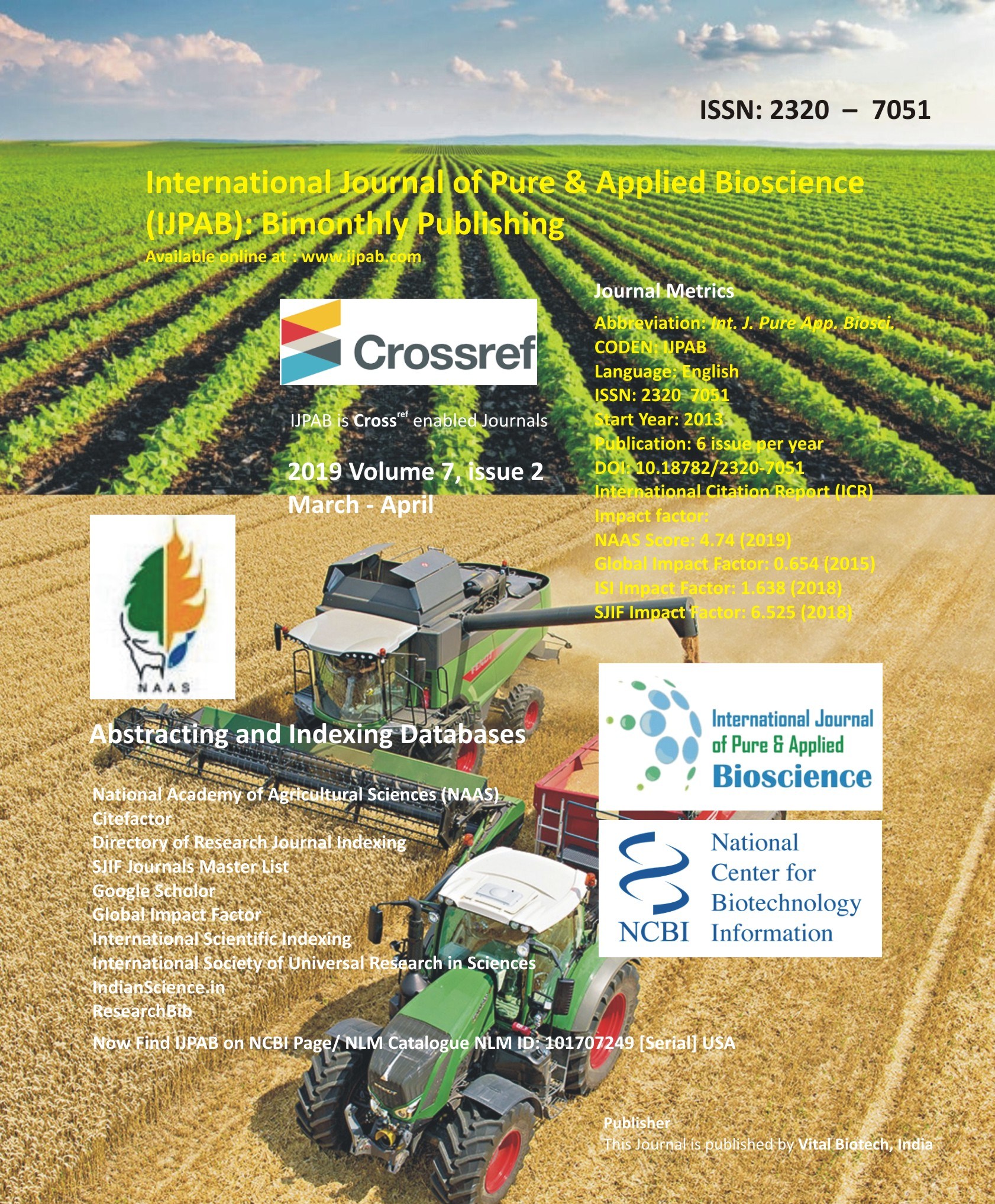
-
No. 772, Basant Vihar, Kota
Rajasthan-324009 India
-
Call Us On
+91 9784677044
-
Mail Us @
editor@ijpab.com
International Journal of Pure & Applied Bioscience (IJPAB)
Year : 2019, Volume : 7, Issue : 2
First page : (105) Last page : (112)
Article doi: : http://dx.doi.org/10.18782/2320-7051.7181
Socio Economic Status and Sheep Husbandry Practices of Migratory Shepherds in Western Maharashtra
S. G. Shirsat1, S. R. Kolhe2, M. P. Nande3*, A. V. Khanvilkar4 and T. C. Shende5
1M.V.Sc. Student, Department of Veterinary & A.H. Extension Education,
2Assistant Professor, Department of Veterinary & A.H. Extension Education,
3Assistant Professor, Department of Veterinary & A.H. Extension Education,
4Associate Professor, Department of Livestock Production & Management,
5Assistant Professor, Department of Animal Genetics & Breeding
Krantisinh Nana Patil of College of Veterinary Science, Shirwal
Maharashtra Animal & Fishery Sciences University
*Corresponding Author E-mail: drmilinda@yahoo.co.in
Received: 1.01.2019 | Revised: 6.02.2019 | Accepted: 13.02.2019
ABSTRACT
A study of socio economic status of migratory shepherds and sheep husbandry practices of sheep in Western Maharashtra was carried out on 120 migratory shepherds in Pune and Sangli district of Western Maharashtra. The study revealed that, majority of migratory shepherds were in the middle age group (61.67%), illiterate (60%), almost all belonging to nomadic tribe and medium family sized (63.33%). Sheep rearing was their main occupation; they possessed kutcha type of house (66.33%), marginal type of land holding (43.33%), medium type of material possession (65.83%), medium annual income (72.50%), medium level of experience (65%) and medium flock size (72.50%). Most of the respondents were member of one organization (71.67%) and had middle level of extension contact (64.16%). Women were actively participated in care and management of sheep (98.33%). Village market was preferred mostly for marketing of sheep and sheep products (94.17%). Migratory shepherds had medium level of knowledge (67.50%) followed by low (21.67%) and high (10.83%) regarding sheep husbandry practices. They have adequate knowledge of selection of ram, feeding of colostrum, vaccination and deworming.
Migratory shepherds had medium level of adoption (70.83%) followed by low (16.67%) and high (12.50%) level of adoption in breeding, feeding, management, health care, record keeping and marketing sheep husbandry practices.
Key words: Socio economic status, migratory shepherds, Sheep Husbandry Practices, Western Maharashtra.
Full Text : PDF; Journal doi : http://dx.doi.org/10.18782
Cite this article: Shirsat, S.G., Kolhe, S.R., Nande, M.P., Khanvilkar, A.V. and Shende, T.C., Socio Economic Status and Sheep Husbandry Practices of Migratory Shepherds in Western Maharashtra, Int. J. Pure App. Biosci.7 (2): 105-112 (2019). doi: http://dx.doi.org/10.18782/2320-7051.7181

